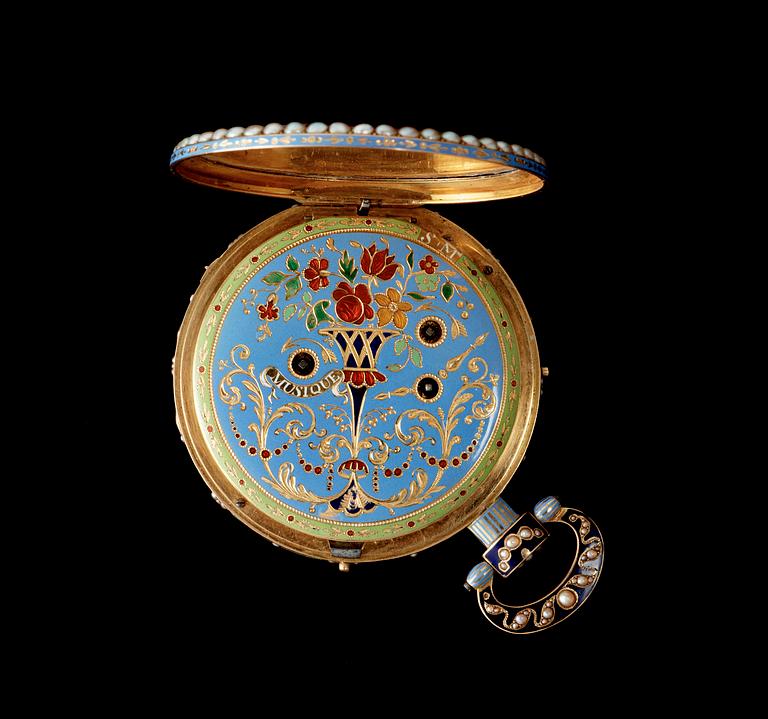A Piquet & Meylan gold and enamel musical quarter repeater for the Chinese market, c. 1820.
Enamelled case with split pearls. The case is signed 'Piguet & Meylan a Genève', nr. 9348. Diam 55 mm.
Enamelled panel has old substantial and well made repairs and a new 12 mm chip damage.
Täydennyslista
Enamelled panel has old substantial and well made repairs and a new 12 mm chip damage.
Muut tiedot
The first 'Chinese market' watches were made during the Ming dynasty in the late 16th century as the Emperors had a great interest in horological and astronomical instruments.
By the late 18th century, Chinese patrons requested only the finest watches, featuring complicated movements such as repeating, music or automatons. The case had to be highly enamelled with motifs representing nature or classical scenes, set with pearls and precious stones.
The present watch with it's combination of a beautifully decorated case and a complicated movement featuring repeating and music is an example of such a timepiece made by special order for a Chinese dignitary.
Piquet & Meylan made musical items of extraordinary quality and the firm was formed in 1811 by Isaac-Daniel Piquet and Philippe Samuel Meylan. Piquet was born at Le Chenit in 1775. He specialized, at an early age, in the manufacturing of expensive and complicated pieces. He settled in Geneva where he formed a partnership with Meylan.
Meylan, a member of renowed family of watchmakers, was born in le Brassus 1772. He specialized in the production of very thin watches and became an eminent maker of watches with musical automata. The partnership was dissolved in 1828 but continued under the name I.- D Piquet.
As decoration was very important to the creation of all their pieces they employed only the most talented enamel painters to decorate their watches. Examples can be seen in the best collections, such as Patek Philippe Museum, Geneva, the Metropolitan Museum of Art, New York and many others.








































